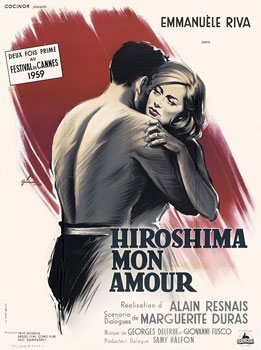 |
| Philippe Noiret in La Pointe Courte |
Elle: Silvia Monfort
Director: Agnès Varda
Screenplay: Agnès Varda
Cinematography: Louis Soulanes, Paul Soulignac, Louis Stein
Film editing: Alain Resnais
Music: Pierre Barbaud
"They talk too much to be happy," says one of the villagers about the Parisian couple (Philippe Noiret and Silvia Monfort) who are spending time in a small fishing community on the Mediterranean. He has been in the town, where he was born, for several weeks, and she arrives to tell him that she wants a separation after four years of marriage. So they wander around, endlessly analyzing their relationship, as life goes on in the village: The townspeople argue with the authorities about where they can fish and about the bacterial count that has been detected in the water; a small child dies; a young man courts a girl over the objections of her father; a festival that involves jousting from boats takes place, and so on. The sophisticated self-analysis of the couple soon begins to look petty against the backdrop of the village's real problems. At one point in their dialogue, a scene is stolen from them by one of the village's many cats, whose playing around on a woodpile behind the couple becomes far more interesting than what they have to say. Aside from Noiret and Monfort, the actors are all actual residents of the village. Varda began as a still photographer, and her sense of composition is notable throughout this film, her first. She had spent time in Sète, the town where La Pointe Courte was filmed, as a teenager, and was photographing it for a friend when the idea of the movie came to her. It's often cited as one of the first films of the French New Wave, of which she became a prominent member, though seven years passed before she made her second and better-known film, Cléo From 5 to 7 (1962). Alain Resnais, who became one of the leading New Wave directors, edited La Pointe Courte, and the striking score is by Pierre Barbaud.

